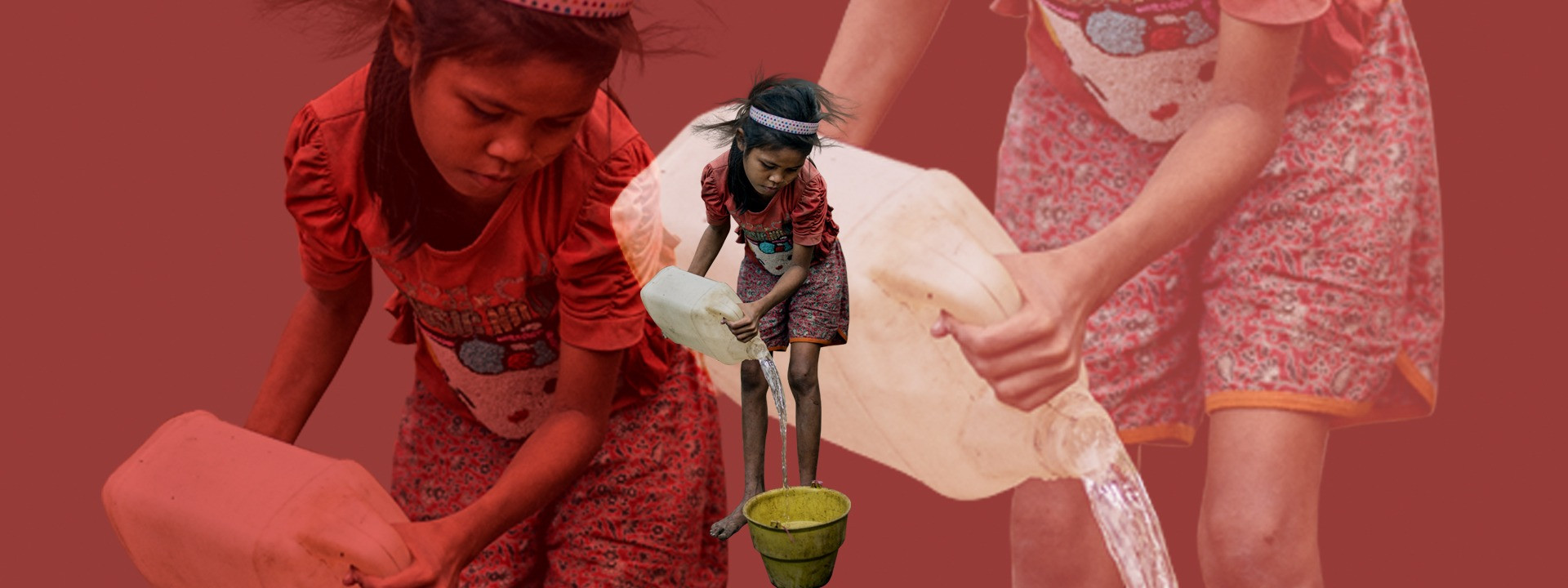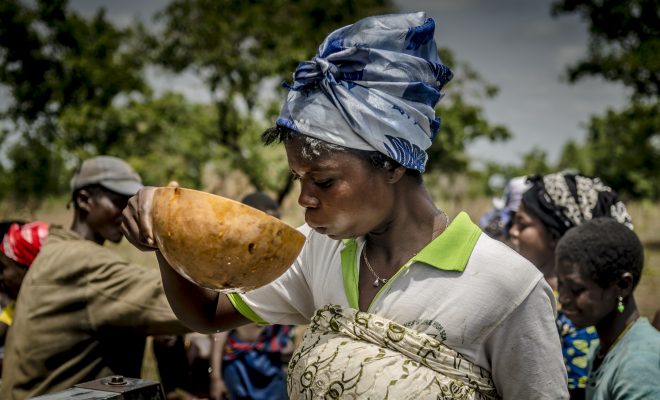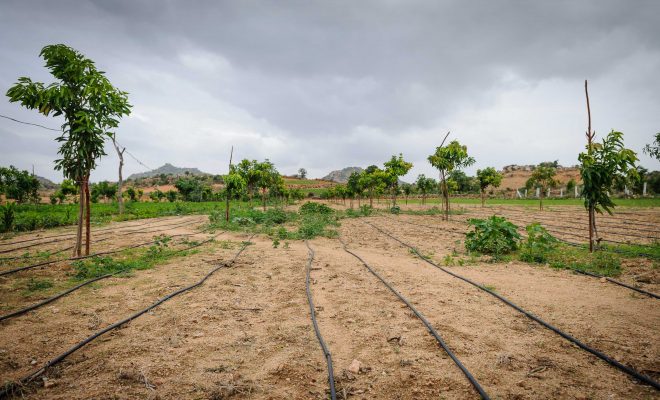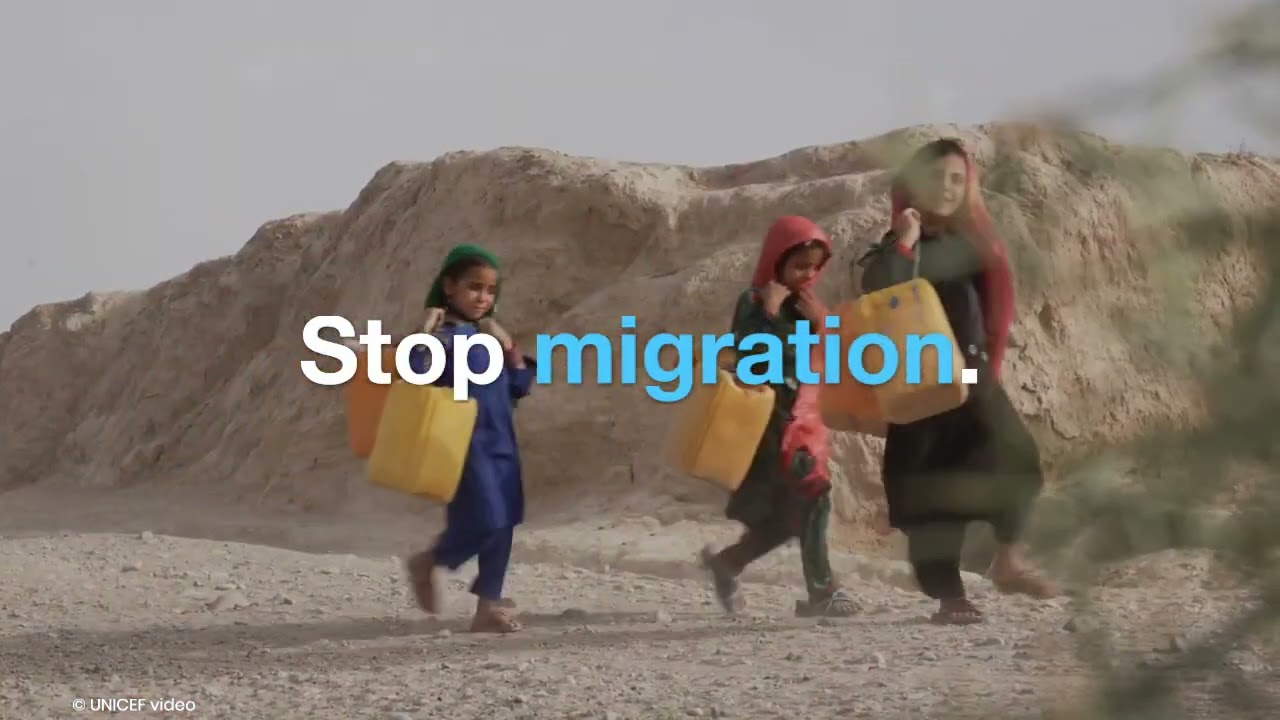
Will we have water to irrigate the plants that feed us, and will the areas where the poorest farmers survive have it? Water availability for agriculture is the most determining factor for the world’s food security in SDG 2: ending hunger. Droughts, which, according to the IPCC, will increase with climate change, already create dramatic situations for more than 2 billion people who live in a situation of permanent water stress; 4 billion more, almost half of the world’s population, now live in unbalanced conditions for at least one month a year. The World Bank estimates that by 2050, some 7 billion people will be forced, at some point each year, to manage their water supply to ensure that water is available for growing crops, raising livestock, producing electricity, and maintaining their health.

The future of food security depends on achieving maximum efficiency in agricultural water use. © jcomp / Freepik
Agriculture, the landscape of survival
Droughts, the most feared event in areas with chronic water shortages, have a radically different impact depending on the economic resilience of the people who experience them. In the developed world, farmers suffer financial losses, but they rely on insurance policies and guarantee funds, resources that protect them from ruin. In contrast, most farmers in the Horn of Africa or the Sahel have almost no administrative protection; for them, a prolonged drought means famine, leading to migration or death.
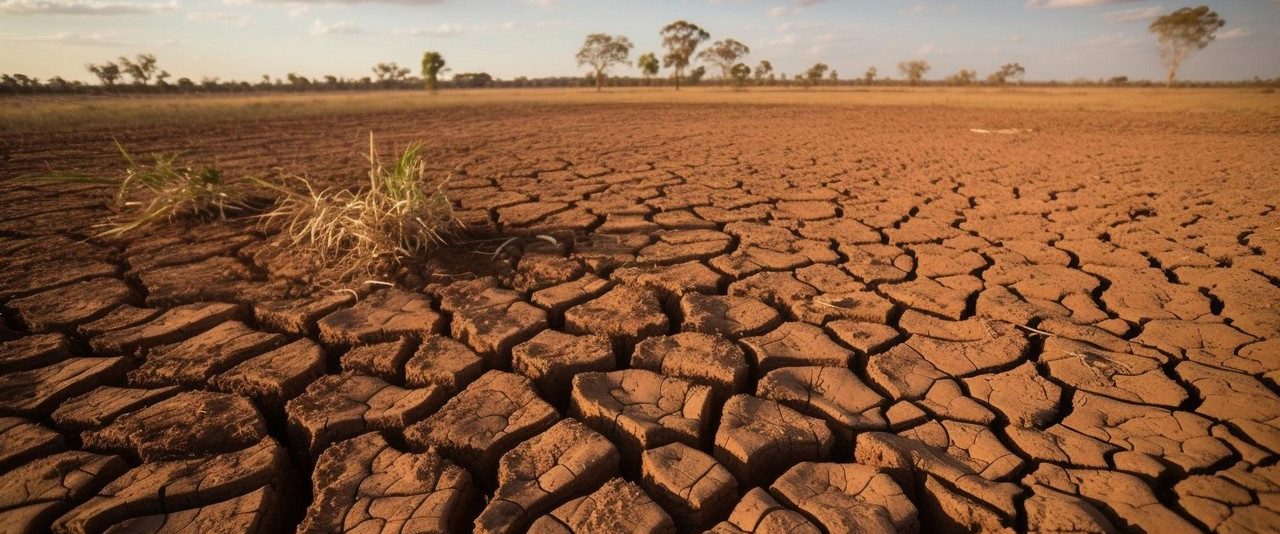
Droughts, the most feared event in areas with chronic water shortages, have a radically different impact depending on the economic resilience of the people who experience them.©vecstock / Freepik
The evolution of the agricultural sector will determine the global balance: the curbing of migratory movements and the effectiveness of strategies to adapt to the consequences of climate change. Most urgently, ending child malnutrition remains a significant threat to the health and growth of millions of children. According to UNICEF, every day, 13,800 children under the age of five die from preventable causes, and undernutrition is linked to half of these deaths. In the next 30 years, the world’s population is expected to reach 10 billion, and the food challenge is enormous.
Eyes set on irrigation
Agricultural capacity depends on water; 71% of water withdrawn from rivers, lakes, and aquifers is used for crops and irrigation. In some countries, this percentage exceeds 95%. Irrigation consumes most of this water and provides up to 40% of the world’s available food calories. Achieving maximum irrigation efficiency is a key factor that does not depend on significant technological investments but on shared knowledge.
The World Bank has an interactive map where the evolution of the targets of each of the 17 SDGs can be studied. With regard to SDG 6, on water and sanitation, it offers data on the evolution of freshwater withdrawal for agricultural use in the world; this graph summarizes it since 2014:
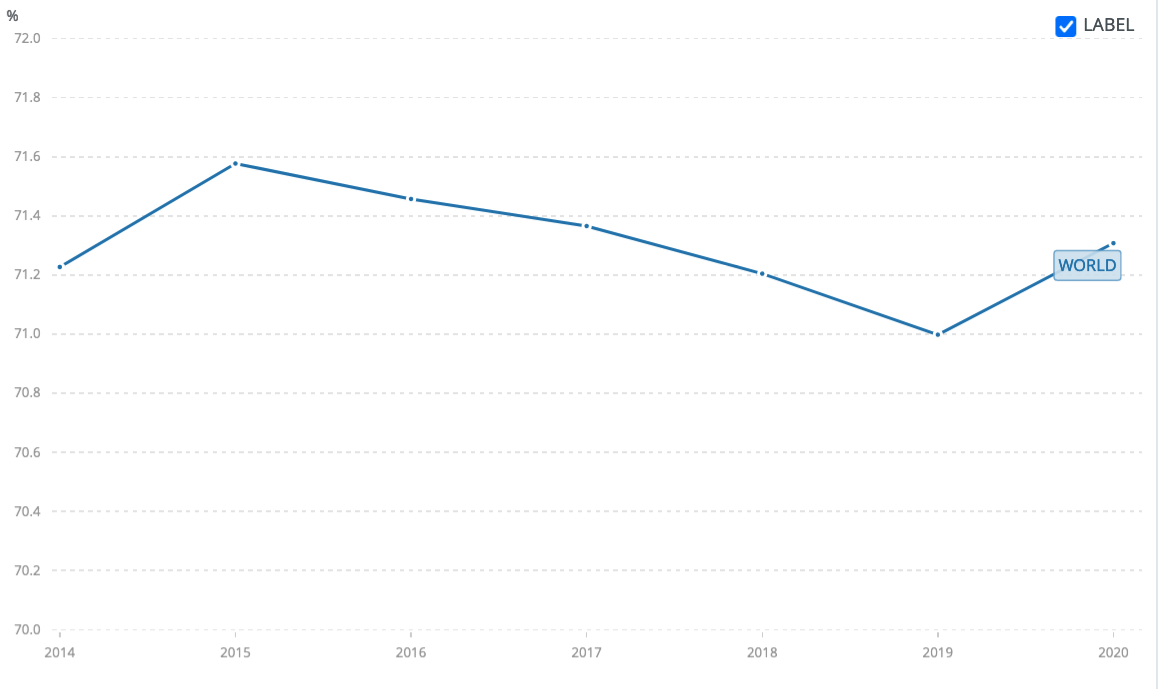
Evolution of water abstraction for agriculture. From 2015 to 2019, there was a decrease from 71.6 percent to 71.0 percent. In 2020, abstraction increased again because of the pandemic. / Food and Agriculture Organization, AQUASTAT data
This interactive map shows the data by country:
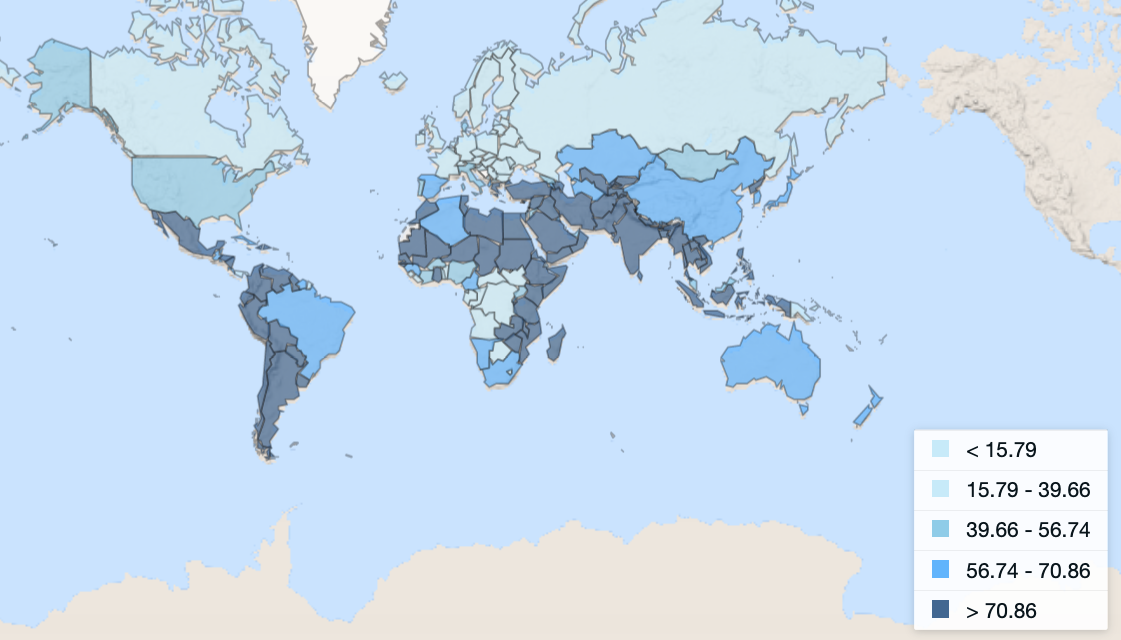
Map showing the evolution of water abstraction by country from 2014 to 2020. / Food and Agriculture Organization, AQUASTAT data.
No water wasted through irrigation to heal the soil
The drip irrigation system we helped implement in Andhra Pradesh, India, allows farmers to save up to 75% of water. This translates into an improvement in their development prospects: they can move away from monoculture peanut farming and diversify their crops by planting mangoes and vegetables.
Irrigation also uses 6% of the electricity generated worldwide. In another project in the same area, we provide photovoltaic panels to drive the pumps that draw water from the ground.
It is not only irrigation systems that need to be improved. Increasing productivity so that more crops or value can be obtained for the volume of water applied to the crop is another line of work.
Climate adaptation requires regenerative agriculture to increase sustainable food production with minimum water expenditure. Service provision needs to be improved and community management capacity built, especially for aquifers, as preserving groundwater is the leading adaptive safeguard. Regenerative agriculture restores life to the soil, reversing the alarming deterioration of agricultural land. Healthy soil is the best tool to fight the climate crisis and food insecurity, a key element in the fight against desertification and empowering the poorest farmers.
Vertical farming: less water, less space, and less energy
In recent years, a new agricultural technique has taken shape in the fight for food security: vertical farming. Growing plants in overlapping “levels” increases productivity in less space: 6,000 square meters produce the equivalent of 130,000 square meters in traditional horizontal agriculture. In addition, the reduction in water consumption achieved in some crops is more than 90%, thanks to aeroponics. This technique consists of spraying water directly on the roots with practically no use of soil.
Vertical farming opens up endless possibilities for greening cities and significantly reducing carbon emissions from food transport.
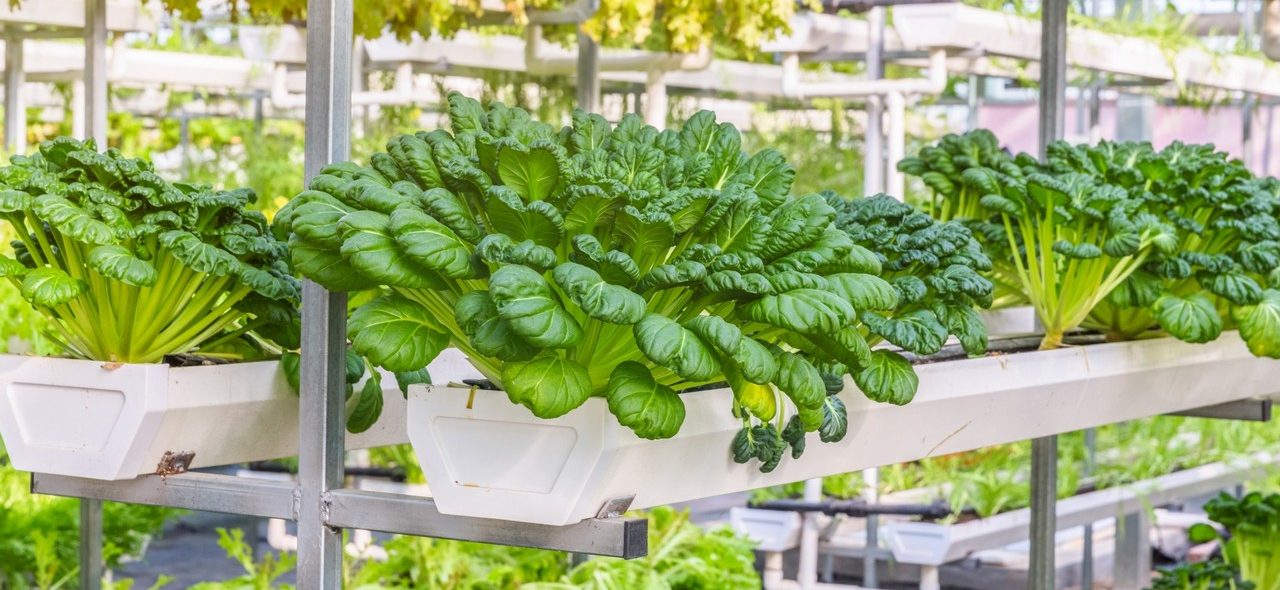
In recent years, a new agricultural technique has taken shape in the fight for food security: vertical farming © fanjianhua / Freepik
The future of food security depends on saving water in irrigation and adopting new farming techniques that can be adopted by the regions that are most disadvantaged by the technological gap. There is no need for significant investments to improve irrigation and adopt other cultivation techniques: transmitting knowledge is the key.


